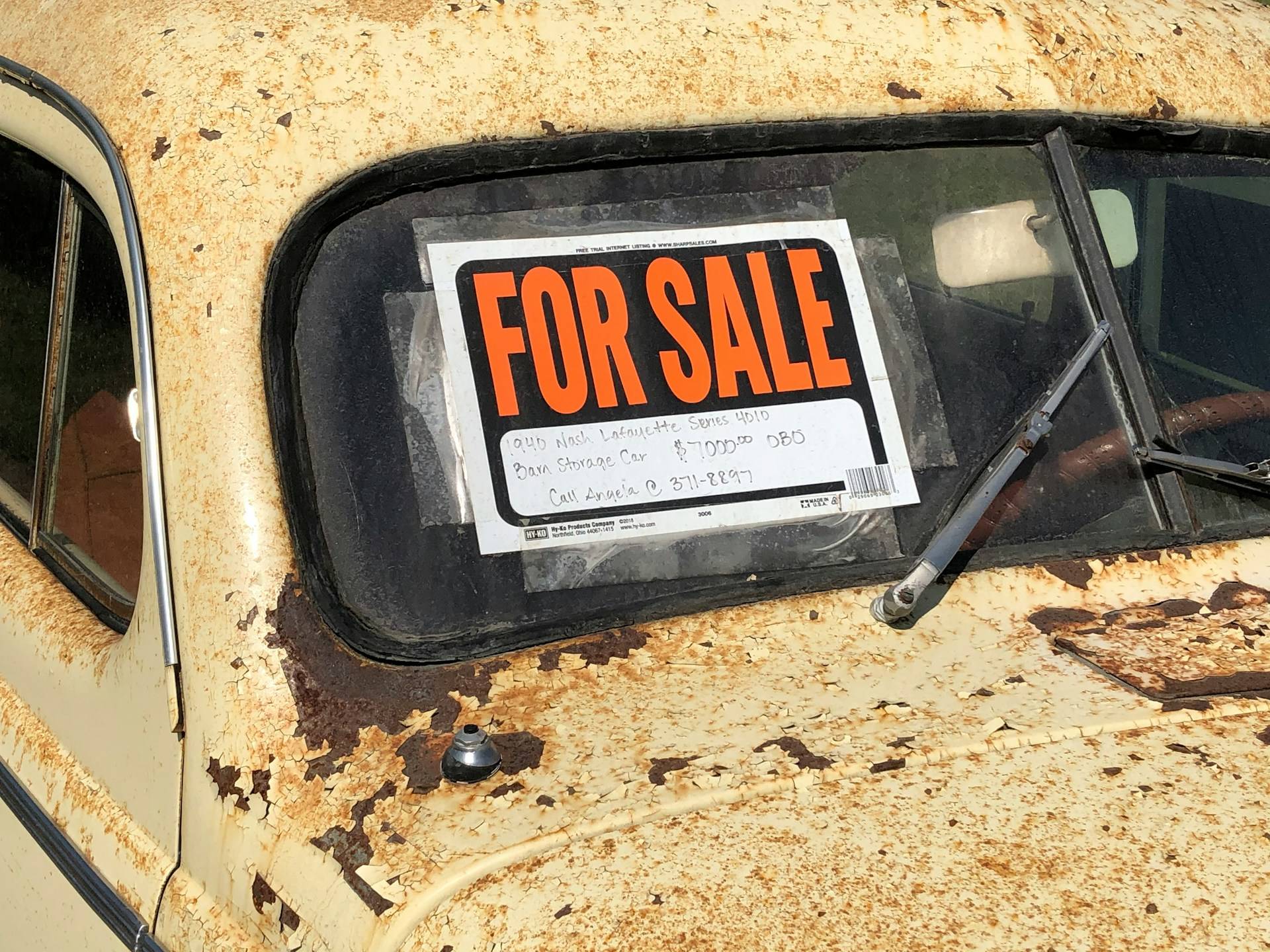There is nothing like buying a vintage car. These classic vehicles are special in every sense of the word: they represent an era of automotive design and engineering that will never come again for the lucky purchaser.
Of course, buying a vintage car is not without its pitfalls, as these cars are of a different breed than what you can find on a showroom floor. Many potential problems can occur to vintage car owners, and becoming aware of the red flags that exist can save you time, money, and a lot of frustration. In this ultimate guide, we’ll go over the most important things to watch out for when buying a vintage car.
The Importance of Research
Research your vehicle before you even look at a car. Know the make and model you want to buy. Look up its history. What is the best example? What common issues should you keep an eye out for? Where can you find information about those issues? If you want to have a vintage Tesla, find out what people before you have done to theirs and what mistakes they made.
Try to write a good version of their pursuit, not your version. Read more about cars or join an online forum. Better yet, buy a book about it. Movies are good for some things.
Books can be good for others. Talk to other nuts like you. Websites can also be helpful. Follow people who write about cars (not me). But all of this information will be useful once you find a car – the more you know, the better car you will find.
Authenticity
One of the biggest issues when purchasing any vintage car is the question of authenticity. Many vintage vehicles have been rebuilt or restored, and some have non-original parts—sometimes, it is difficult to know what you are buying. Some modifications are acceptable, particularly if they improve reliability or safety.
Have the VIN (Vehicle Identification Number) and the car’s engine numbers checked to make sure they match the numbers in the manufacturer’s database. And remember that the originality of parts (and original features) is usually closely tied to a car’s value and desirability. Documentation that proves provenance and authenticity can improve the car’s value.
Rust and Corrosion
Rust is the nemesis of any vintage vehicle. It can weaken a car’s structure, and the cost of repairs can be steep. Scan the vehicle’s body and be particularly wary of vulnerable areas, such as wheel wells, door sills, and undercarriage. Use a magnet to check for filler under the paint because this can be an indication of a fix to a previous rust problem.
Surface rust can generally be treated and the scale removed before it migrates deeper into the metal, but deep rust can be the death knell for a would-be restoration. A lot of rust is pretty much a reason to walk away unless you want to spend big bucks.
Paint and Bodywork
Give the paint and bodywork a thorough inspection. A fresh paint job can mask serious problems with rust or bodywork, especially if the paint overlaps existing features, such as chrome or rubber seals, where you would expect to see no paint.
Look for signs of overspray as well. Look for the tell-tale signs of a quick job: waviness or wavefronts that appear on the bodywork where large amounts of paint have been sprayed or bubbles on the underside of body panels. This could be due to thin primer or the use of too much undersealer.
Indeed, matching the body color to the car’s original color code is an essential component of authenticity and subsequent resale value (even with some patina, original paint can enhance the car’s value).
He will never allow the orange paint to take it back again.’ Nowadays, sporty European cars might be worth six figures. But the cars I currently covet – focusing on mid-century European machines – tended to appreciate at a slower rate but are now becoming popular once again and are increasing in value. Several of these cars are affordable, with one even matching my budget.
Mechanical Condition
They will also examine the mechanical condition of a classic car. These cars tend to have older technology that is more prone to problems.
When inspecting a classic car, listen for loud or strange noises, such as engine, transmission, and suspension sounds. Look for smoke coming from the exhaust. This could mean that something is wrong with the engine.
You should check the oil and other fluids for cleanliness and proper levels; dirty or low fluids can indicate a poorly maintained car. You should also check the driving characteristics—a car should feel firm and responsive, without excessive vibrations or strange noises.
Electrical Systems
Vintage cars might have simpler electrical systems than newer cars, but right now, all the same kinds of issues still apply. See that the lights, gauges, and other electrical parts work as they should.
Electrical problems can be one of the hardest and most expensive issues to grapple with, especially if someone has had an electrical system fiddled with.
Look for repairs done in an amateur manner, such as wires of a different color and tape that could imminently come undone or that are easy to do yourself. The original wiring is often brittle and likely to fail anyway, so the condition of the electrics should be considered carefully.
Interior Condition
Examining the interior can tell a lot about a car’s past maintenance. Check the seat fabric, the dash, and other surfaces for wear and tear. Good original interiors are much desired, but they should look good.
Look for water stains or mold that could indicate leaks or other problems. Soiled carpets, wrinkled headliners, or cracked door panels are signs that replacing interior parts can be expensive and time-consuming.
Documentation and Ownership History
A good car history is almost always an advantage: records of maintenance and repairs, as well as listing past owners, should be a help in getting a clear picture of what the car has been through and how well it has been looked after.
Look out for gaps or inconsistencies in the vehicle’s history. A neatly chronological file with matching mileage notes will tell you that the car was likely cared for.
Professional Inspection
You might be confident that you can inspect it yourself but still have a mechanic give it a once-over. A professional, whether a mechanic or a vintage car specialist, will be able to spot things that you’re overlooking and can provide some sense of what needs to be done and how much it will cost.
An inspection can also help you negotiate the price. If the seller balks at your request for an inspection, that’s a red flag.
The Test Drive
Test drive the car every time. This step is extremely important because you are finding out how the car handles on the road. In the test drive, notice the way the engine runs, the way the transmission responds, and the way the car brakes, accelerates, and corners. Check for any unusual noises, vibrations, and poor handling.
Request and take some time to conduct a test drive. Make sure to take the car on the highway and in heavy traffic to understand its performance in different scenarios.
Consider the Costs
Owning an old car is a costly undertaking. In addition to the purchase cost, you will need to include the price of insurance, servicing, and repairs. Servicing vintage cars often needs to be done more frequently, and the availability and price of parts can be problematic.
Make sure to buy something within a realistic budget that you can afford without a car loan and repair costs. Although the more expensive car would require less time in the garage between waxes, it may be better to wait for a more affordable option that won’t require the extra money spent on a really expensive garage.
Trust Your Instincts
Finally, use your gut. If you don’t like a car or the seller’s attitude, walk away. There are a ton of vintage cars out there, and you can find one that fits your needs. Just like a new car, purchase your vintage car after doing your research.
Buying a vintage car should be a joy, not a chore. Arming yourself with knowledge of these pitfalls – and taking the right precautions – will help you avoid many of the common mistakes and find a car that you’ll love for years to come.
Conclusion
When you buy a vintage car, you’re investing in automotive history. This means it’s not as simple as just ‘buying a car’ – it’s actually like buying into a piece of history. Patience, research, and an eye for detail are essential in helping you to make the right decision.
However, the process of purchasing such a vehicle is usually paired with a lot of advice, which ranges from social media comments on adverts to official guides and even warnings from the police about the popularity of scams.







Leave a Comment